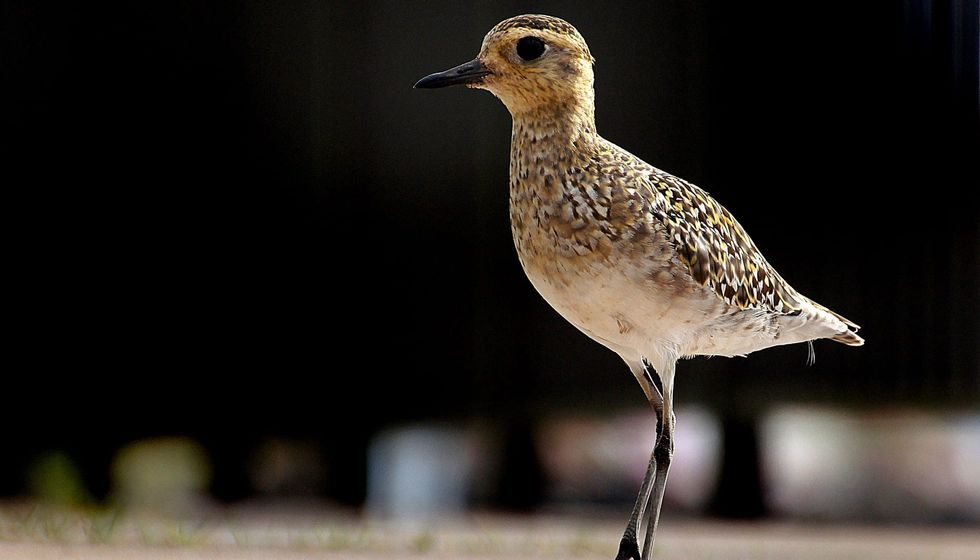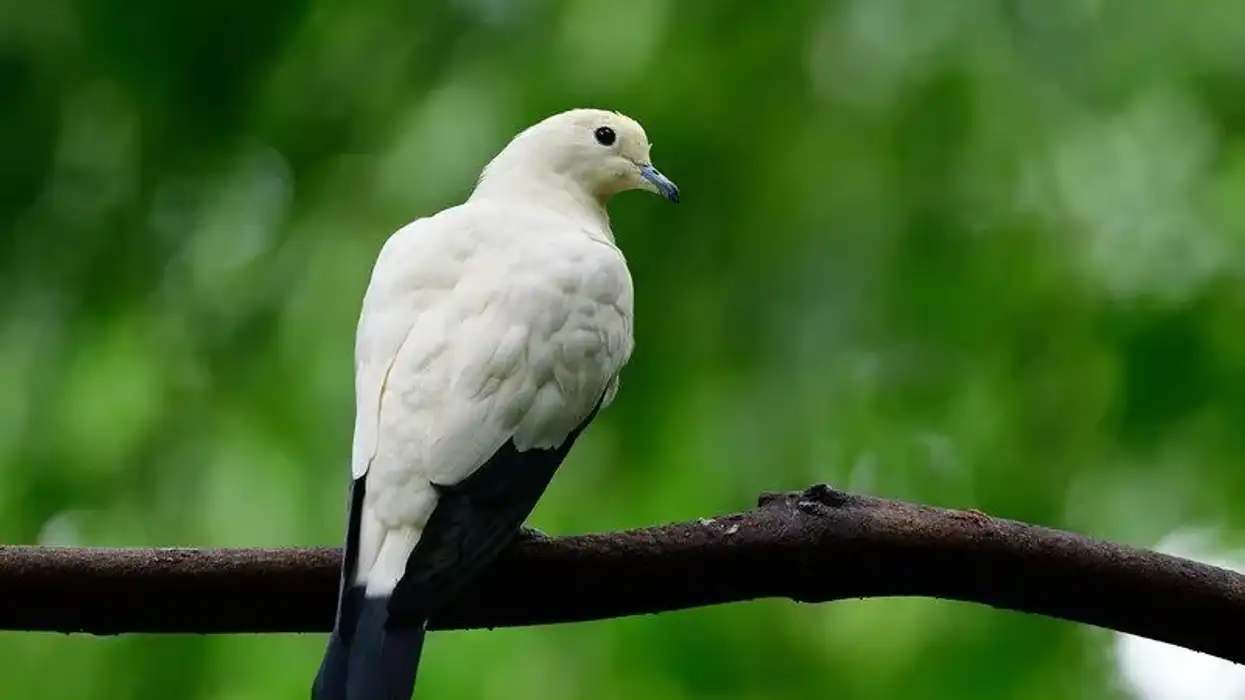The Pacific golden-plover is a medium size bird belonging to the order Charadriiformes. These birds have beautiful golden feathers that help them stand out from others.
Pacific golden plovers breed annually in Siberia and Alaska and are one of the estimated 40 wading bird species that can be found in the Arctic circle. The migration range map of this bird is one of the largest in all the migrating birds as they cover a 15534.2-16777 mi (25,000-27,000 km) round trip across the world!
Pacific golden plovers have seen their share of population decline as they have been hunted on the coast of Asian countries they visited, but now, thankfully, they have been hunted less than usual thanks to conservation efforts.
This bird is a major attraction for the avid bird watcher as they hop around on the coast of the islands in the Pacific ocean on the beaches, minding their own business!
For more relatable content, check out these green heron facts and palm cockatoo facts for kids.
Pacific Golden-Plover Interesting Facts
What type of animal is a Pacific golden-plover?
The Pacific golden-plover (Pluvialis fulva) is a medium-sized species of birds that belong to the plover group of birds from the Charadriinae subfamily of order Charadriiformes. Pacific golden-plover migration route or range map is one of the longest in the bird species as these birds cover more than 2,000 miles in a single non-stop flight.
What class of animal does a Pacific golden-plover belong to?
The Pacific golden-plover (Pluvialis fulva) belongs to the Aves class of animals.
How many Pacific golden-plovers are there in the world?
The population count of the Pacific golden plover cannot be stated accurately as these birds, due to their large migration range and vast breeding grounds, have a scattered population all throughout the world which is around 1-3 million individuals!
In Alaska, the population count of these birds is around 35,000-50,000. In Hawaii, it is around 74,000 with another 15,000 on the Oahu island in Hawaii.
Asia has around 200,000 of these birds that are divided equally into the south-western, south-central, east-central, and south-eastern parts of Asia. A population of 10,000 is found in Australia with 250 of them in North-western Australia and last but not least, 1000 golden plovers are found in New Zealand.
Where does a Pacific golden-plover live?
The Pacific golden plover is usually found in tundra regions.
Since the Pacific golden plovers are migratory birds, their habitat range map is huge as they spend their winters and breeding seasons in different parts of the world.
The winter season of these birds is mostly spent in the South Asian and Australian regions, with another part of the population wintering in Hawaii and western Hawaii islands, Alaska, and California in the North American regions and the Pacific islands.
During the breeding season, these birds are found in the tundra from western Alaska to Siberia.
What is a Pacific golden-plover's habitat?
These birds can be found in shrublands, mudflats, beaches, the coast of certain regions, fields, sandy beaches, lagoons, wetlands, muddy wetlands, fields, mangroves, and prairies.
Who do Pacific golden-plovers live with?
The Pacific golden plover is a social bird. These birds fly in large flocks during their migration to the winter and breeding grounds.
How long does a Pacific golden-plover live?
The average lifespan of the Pacific golden plovers is estimated to be around 15 years in the wild. The lifespan of these birds in captivity has not been studied extensively. Their lifespan can either be extended or shortened with respect to the diet that they can follow.
How do they reproduce?
Pacific golden plovers like the American golden plover and mountain plover form monogamous pairs during the breeding season that will only last through one season.
Pacific golden plovers gather in a large group in the breeding grounds and males will perform aerial displays by flying high with their wings outstretched and will give a repeated call or a whistle to catch the attention of the female.
If the female is receptive, she will come together with the male, and then both these birds will make a nest together, which is usually on the ground, or dry ground if they are in the tundra.
After the mating is concluded, the female will lay four eggs and both parents will take turns in incubating the eggs for a period of 23-25 days. The young are fed by both parents.
What is their conservation status?
The Pacific golden plover bird species' conservation status has been listed as a species of Least Concern on the IUCN Red List as these birds are found all across the world due to their large migration range. They occur in a large number in the pacific islands, North American regions of California, Hawaii, and Alaska.
Pacific Golden-Plover Fun Facts
What do Pacific golden-plovers look like?
The upper parts of this bird are dark brown with gold, pale yellow, or white specks. The underparts are usually white in the form of a stripe that covers the eyes, wings, and forehead, the face and neck are black with white borders. Females have the same plumage as males but are duller in comparison.
The breeding plumage of this bird is different from the non-breeding plumage as breeding males have a solid black color from their chin to the undertail. This breeding plumage makes them look similar to the American golden plovers who have shorter wings and brighter yellow specks on their upper parts.
The non-breeding adult in this bird species has a dull greyish-brown body with bright golden washed upperparts, heads, and necks. During winter, the legs of this bird are black but after winter the legs lose their black color and have white underparts.

How cute are they?
This bird is extremely cute thanks to its beautiful plumage and how it hops on its legs as it forages on the coast of Hawaii and other islands in the Pacific and Indian ocean!
How do they communicate?
These birds make calls to each other in the form of whistles. These calls are usually made when the male wants to attract a female during the mating season and these calls are also used to alert the young and old of predators.
How big is a Pacific golden-plover?
The Pacific golden plover is a medium-sized bird species and a full-grown adult is 9-10.2 in (23-26 cm) in height. Its wings are 23.6-28.3 in (60–72 cm) wide which makes them larger than the snowy plover.
How fast can a Pacific golden-plover fly?
The Pacific golden plovers can reach a maximum flight speed of 50 mph (80.5 kph.)
This bird is one of the most rugged and rigid in the bird family as they can cover almost 3000 mi (4828 km) in flight as they migrate to their usual breeding and winter ground of Hawaii, California, Western Alaska, Alaska in the North American regions, and other parts of the world.
How much does a Pacific golden-plover weigh?
A full-grown adult Pacific golden plover weighs between 3.5-8 oz (100-228 g).
What are the male and female names of the species?
No particular name has been assigned to either sex of this bird.
What would you call a baby Pacific golden-plover?
A baby Pacific golden plover is called a chick.
Pacific golden plover chicks are precocial (born in an advanced state). Both parents take part in flight with the young to feeding grounds where the chicks feed themselves under the supervision of the parents.
What do they eat?
Pacific golden plovers are omnivorous and their diet consists of insects, berries, snails and marine creatures.
Are they poisonous?
No, this bird is not poisonous.
Would they make a good pet?
No, these medium-sized birds are a wild species and catching them to sell off in the pet trade in some parts of the world can be illegal!
Did you know...
The Pacific golden plover looks similar to the American golden plover so you might have some trouble differentiating them! A qualified field guide will certainly help!
The Pacific golden plover has many names by which locals know them! In New Zealand, they are known as Kuriri by the Māori tribe and they are known as Kōlea in Hawaii.
When nesting, these birds are overprotective of their young ones and will fight off larger birds to protect the young.
The conservation of these birds is taken seriously in some of the countries that they visit during winter as hunting is illegal!
The Pacific golden plover was considered the same species as the American golden plover and was known as Lesser golden plover.
What is special about the Pacific golden-plover?
The Pacific golden plover is a special bird species due to its different plumages in the breeding and non-breeding adult. Non-breeding Pacific golden plovers are lighter in color with yellow and golden feathers compared to the dark black, yellow, and golden dotted plumage of the breeding Pacific golden plovers.
Why do Pacific golden-plovers migrate?
Pacific golden plovers migrate in the search of better breeding regions and a better place to spend their winter in. In each migratory season, this bird migrates from Alaska to Hawaii and a large part of the world also comes under their migration range map as they fly from Alaska to New Zealand.
Here at Kidadl, we have carefully created lots of interesting family-friendly animal facts for everyone to discover! For more relatable content, check out these Northern parula facts and hoatzin facts pages.
You can even occupy yourself at home by coloring in one of our free printable Pacific golden plover coloring pages.









